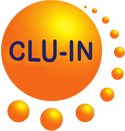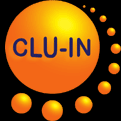Search Result
COMPOST-ASSISTED PHYTOREMEDIATION OF AS-POLLUTED SOIL
Gonzalez, A., P. Garcia-Gonzalo, M.M. Gil-Diaz, J. Alonso, and M.C. Lobo.
Journal of Soils and Sediments [Published online 9 Mar 2019 prior to print]
Filed Under: Research
Filed Under: Research
A greenhouse experiment was performed using soil artificially contaminated with As at two doses. Sewage sludge composted with pruning waste was used (40 t/ha) as amendment. After the plants reached the end of their growing cycles, As uptake, plant physiological and biochemical parameters, and As availability and physicochemical properties in soil samples were analyzed. The plant species exhibited different behaviors with compost application. Compared to wheat and irrespective of As doses, barley plants in compost-amended soils showed an enhanced As translocation to the aerial part. Although either species could be used for phytoremediation of As-polluted soils, barley is of greater interest for phytoextraction due to its higher biomass and high As translocation when compost is applied to As-contaminated soil.
Journal of Soils and Sediments [Published online 9 Mar 2019 prior to print]
Filed Under: Research
Filed Under: Research
A greenhouse experiment was performed using soil artificially contaminated with As at two doses. Sewage sludge composted with pruning waste was used (40 t/ha) as amendment. After the plants reached the end of their growing cycles, As uptake, plant physiological and biochemical parameters, and As availability and physicochemical properties in soil samples were analyzed. The plant species exhibited different behaviors with compost application. Compared to wheat and irrespective of As doses, barley plants in compost-amended soils showed an enhanced As translocation to the aerial part. Although either species could be used for phytoremediation of As-polluted soils, barley is of greater interest for phytoextraction due to its higher biomass and high As translocation when compost is applied to As-contaminated soil.
The Technology Innovation News Survey welcomes your comments and
suggestions, as well as information about errors for correction. Please
contact Michael Adam of the U.S. EPA Office of Superfund Remediation
and Technology Innovation at adam.michael@epa.gov or (703) 603-9915
with any comments, suggestions, or corrections.
Mention of non-EPA documents, presentations, or papers does not constitute a U.S. EPA endorsement of their contents, only an acknowledgment that they exist and may be relevant to the Technology Innovation News Survey audience.





